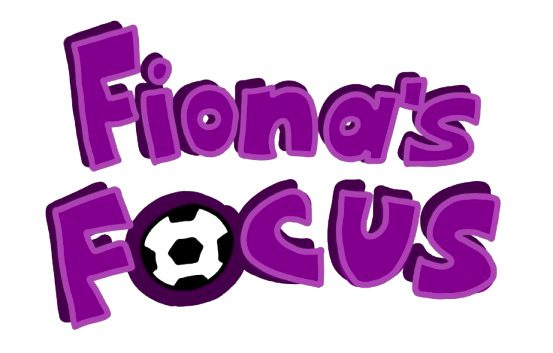Sports amid pandemic teach athletes resilience
For athletes coming into the new school year, the days of Zoom practice, outdoor strength training, remote competitions and absent postseasons appear to be gone. It seems that we have finally turned a corner on the pandemic, with teams everywhere competing regularly again and dreams of championships no longer seeming as far out of reach.
But in order to have gotten to this point, athletes everywhere have had to put their motivation, work-ethic and love of sport to the test; taking off as extended a period of time as a pandemic is simply not an option for high-level competitors. Nevertheless, the adversities that athletes have endured this past year have taught them valuable lessons in resilience, ones that would have been impossible to replicate had things been normal.
“When sports were cancelled in the spring of 2020, I was sad but also relieved,” says junior Track & Cross-country runner Ella Gutierrez. “I injured myself in early January [2020]. It took me out of commission for eight months.”
Faced with adversity before the pandemic had even begun, things could have become even more challenging for Gutierrez once stay-at-home orders kicked in. As any athlete would know, it can be extremely difficult to come back to a sport after just three weeks out, let alone eight months. Often, the rehabilitation that has to be done while injured is harder, both physically and mentally, than traditional, in-season practices.
But Gutierrez didn’t let herself succumb to that mentality.
“The pandemic was a perfect opportunity to recover and regain strength with physical therapy exercises.”
Gutierrez was able to start running again in August 2020, and although it was an uphill climb to return to peak running shape, she credited her runs as something that helped her feel good and make it through the era of the coronavirus.
“Running during the pandemic helped me filter out many negative feelings and emotions, improving my mental health and well-being.”
When the long-awaited cross-country season finally came around, Gutierrez found herself confronting yet another new set of challenges.
“The pandemic changed the amount of people participating in a race, so it was really weird having to race one or two schools at a time,” Gutierrez explains. “There was no arguing with the CDC about the low populated meets, so all I could do was persevere and train for next season with hope everything [would] be back to normal.”
Because she was able to push herself even when things looked so uncertain, Gutierrez learned just what it meant to be a fighter and proved that she had the will to continue on in her sport no matter what challenges it or the pandemic threw at her.
For sophomore football player Boaz Lieberman, it was the community he built with his teammates, both on and off the field, that enabled him to persevere through tough times.
“We were able to communicate with each other and get out and workout while social distancing, but also getting better as a community,” he says. “It wasn’t as difficult as you’d think it would be because we were all there together.”
Once it became clear that a football season would take place last year with the easing of pandemic restrictions last spring, this community was finally allowed to bring the skills they had developed over the offseason into games. A couple of weeks later, with Illinois’ Coronavirus metrics showing long-term improvements, the team was granted the added benefit of refining their skills at newly allowed full contact practices.
“Even though the season was limited—we only had six games instead of nine—we were able to play together as a team, and I guess after that, and once the vaccinations started becoming cleared for people to take at our age…the practices had kind of transformed. The start of this season, so far, we’ve been pretty much practicing as a whole group together,” Lieberman says.
In the end, the work the JV football team put in during the extended pandemic offseason propelled them to an impressive 5-1 record. While they did come out on top, the team’s journey wasn’t an easy one, and their achievement occurred despite the barriers that stood in the way of individual team members’ roads to improvement.
“I was lucky to be able to have a constant workout schedule, so that really helped keep my mind in the right place,” says Lieberman. “[But] I know people have different home situations, and it’s hard to stay [with] a certain path and mindset when you don’t have a coach and a community that’s setting up practices, so I know that’s affected a lot of people.”
Still though, what helped make it easier for Lieberman and teammates alike to persevere was the fact that practice was something that was first and foremost fun, with benefits extending beyond the field and into the (virtual) classroom.
“Even though we were having less practices, [practice] was really a highlight in my week that I could be able to look forward to, even with a lesser amount of time,” Lieberman explains. “Being able to just look forward to that during the week, really helps with staying on topic and paying attention in class over Zoom. So, [practicing] definitely helped, even as much as when we had practice every single day.”
Although not at all an ideal situation, the pandemic and the corresponding adaptations that student-athletes had to make as a result ultimately proved to be nothing that they couldn’t overcome. Whether this strength was found internally or through community, the way that athletes have stuck it out in the last year and a half foreshadows a future ripe with success for ETHS athletic programs.
Your donation will support the student journalists of the Evanstonian. We are planning a big trip to the Journalism Educators Association conference in Nashville in November 2025, and any support will go towards making that trip a reality. Contributions will appear as a charge from SNOSite. Donations are NOT tax-deductible.







